MY ROLES
UX Design, UX Research, Visual Design, Video Editing
DESIGN PROCESS
LEARNING OUTCOMES
+ How to conduct effective user interviews with DHH users
+ Testing out hypothesis based on data analysis and research with
the feedback from the end-user
+ Translate user feedback to effective LoFi and HiFi prototypes
+ How to diversify personas so the design solution is applicable
in multiple scenarios
+ Conducting effective usability testing sessions based on design
objectives
+
BACKGROUND RESEARCH
DHH Users in 2018
Primary Challenges
+ A language barrier exists between the hearing community and the
deaf and hard-of-hearing (DHH) community.
+ American Sign Language (ASL) has its own grammar, vocabulary,
and expression-based context.
+ While there are a number of different creative solutions that the DHH
community has at their disposal, many of these are ineffective in the
context of small group conversations or predicated
on a DHH participant’s proficiency with written English.
+ Inability to effectively communicate which can have a significant
negative effect on academic performance as well as create feelings
of loneliness, isolation and frustration.
+ DHH users can feel self-conscious and ostracized when using an
assistive device in a public setting"
Conversations based on Situations
Our background research highlighted specific situations in
the daily lives of DHH users where they would need to communicate
with hearing users who did not know ASL.
Each situation presents its own set of challenges depending on
the complexity of the conversation.
Technical Interpreters
Our research also uncovered the importance of technical ASL
interpreters. Technical interpreters need to have the following skillsets
Specific subjects of interpreter
These are some of the areas that often require interpreters with
knowledge of the subject matter being discussed.
COMPETITION ANALYSIS
Mobile VRS (Video Relay Service) Apps
We studied several mobile VRS (Video Relay Service) apps that are
designed for communication between hearing and DHH users. Our
objective was to find common features in all of these apps and identify
solutions that have not been incorporated as opportunities for BrickTalk.
USER RESEARCH
User Interviews
We began our process with a one-on-one interview with a DHH
user. We wanted to build empathy with the user by understanding
the challenges he faces on a daily basis.
We had a series of interviews with the user including evaluating our
ideas, sketches, and our prototypes.
The interview and usability evaluation sessions were conducted in
the Future Everyday Technologies (FET) lab at Rochester Institute of
Technology
Interview Insights
DESIGN OPPORTUNITIES
Combining the data we acquired from the background research,
competition analysis and the user interview, we made a list of design
opportunities.
JOB STORY
DESIGN OBJECTIVES
+ Incorporate a solution that can grant access to an interpreter
anywhere and anytime
+ Design a solution that allows users to have contextual
conversations based on specific subjects (like 'Law' or 'Engineering')
+ Time and location cannot be hinderances that prevent users from
having a conversation
+ Extend the solution to a group setting that includes both DHH and
hearing users
+ The solution needs to be primarily video-based
PROTO PERSONAS
Based on the background research, competition analysis and insights
from the user interview, I created a set of proto-personas to gain a very
basic understanding of the goals and challenges faced by both DHH
and hearing users in both the workplace as well as academic contexts.

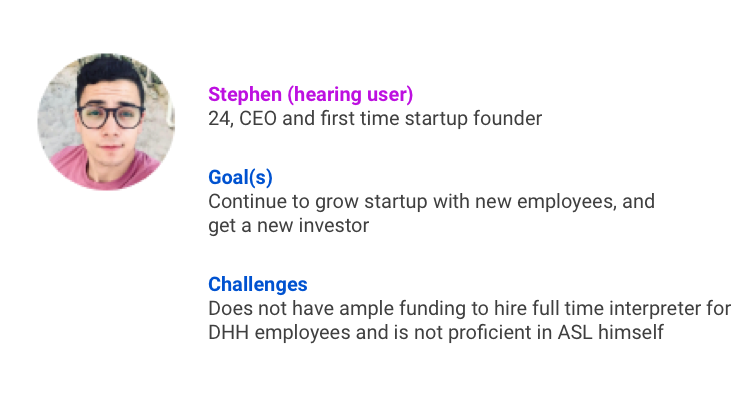
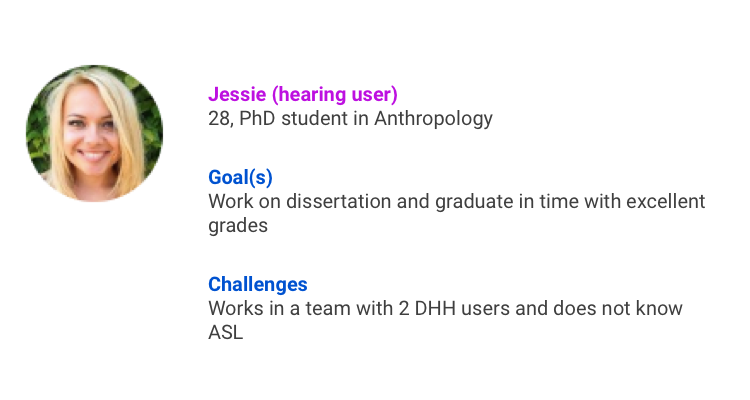
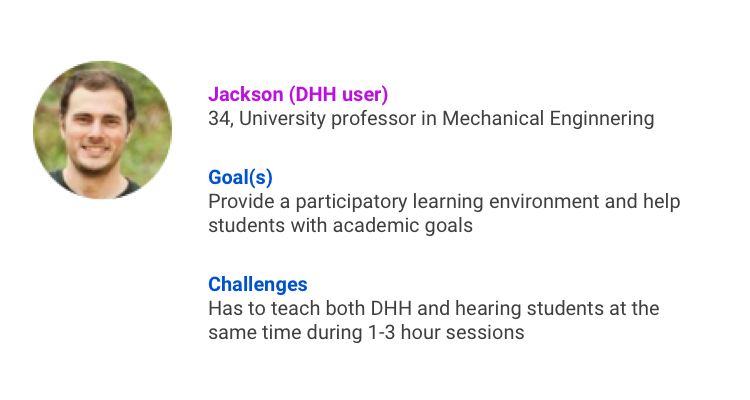
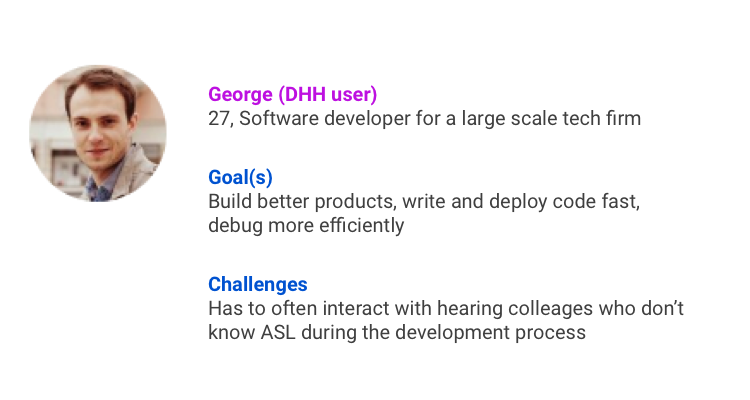
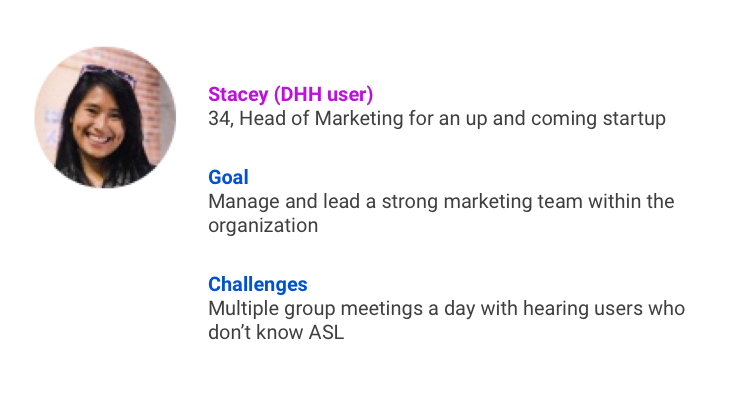
BRAINSTORMING IDEAS
Initial Sketches
Once we defined the target personas along with the use-cases and
a conceptual model, we came up with a series of sketches.
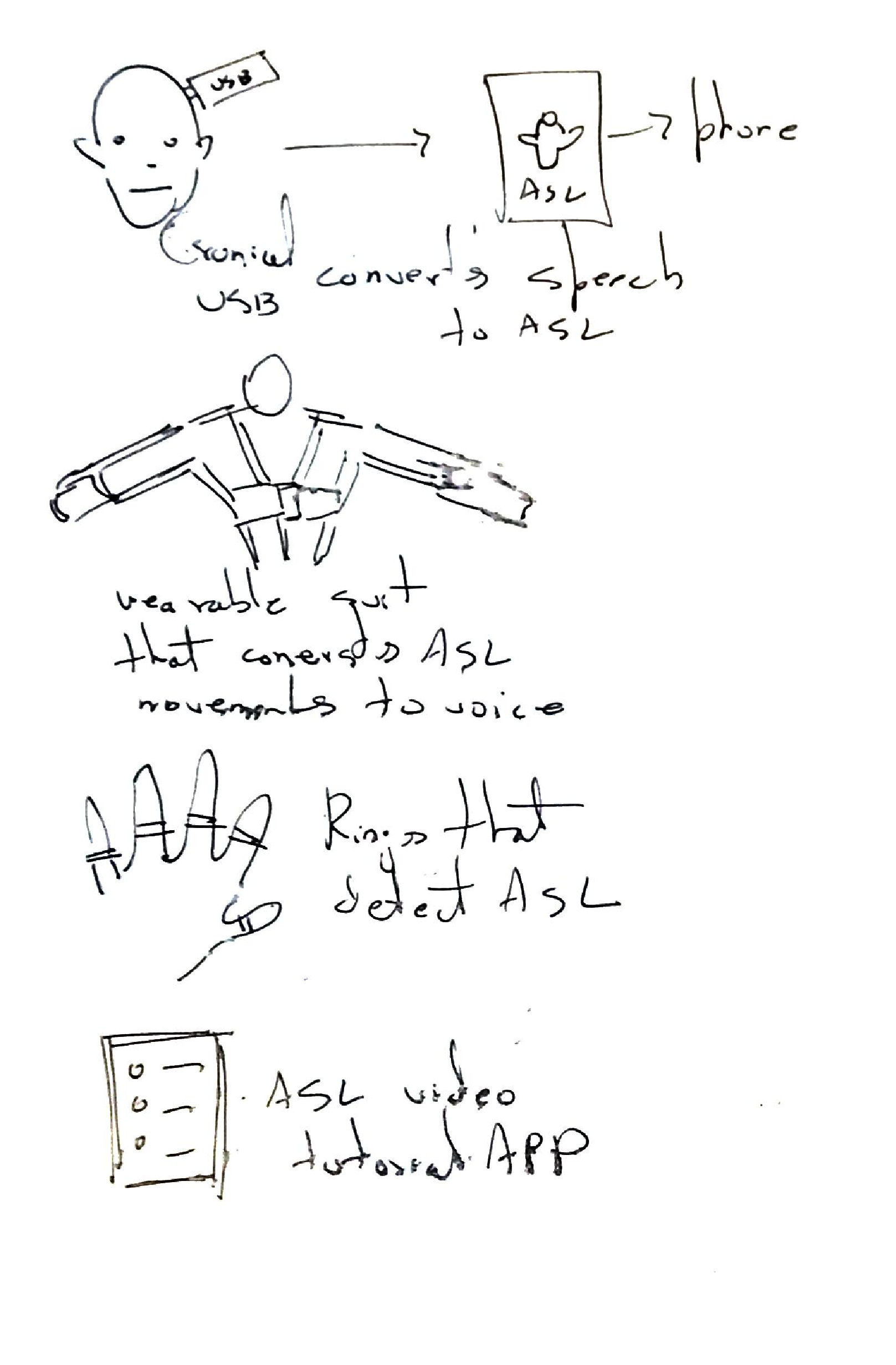
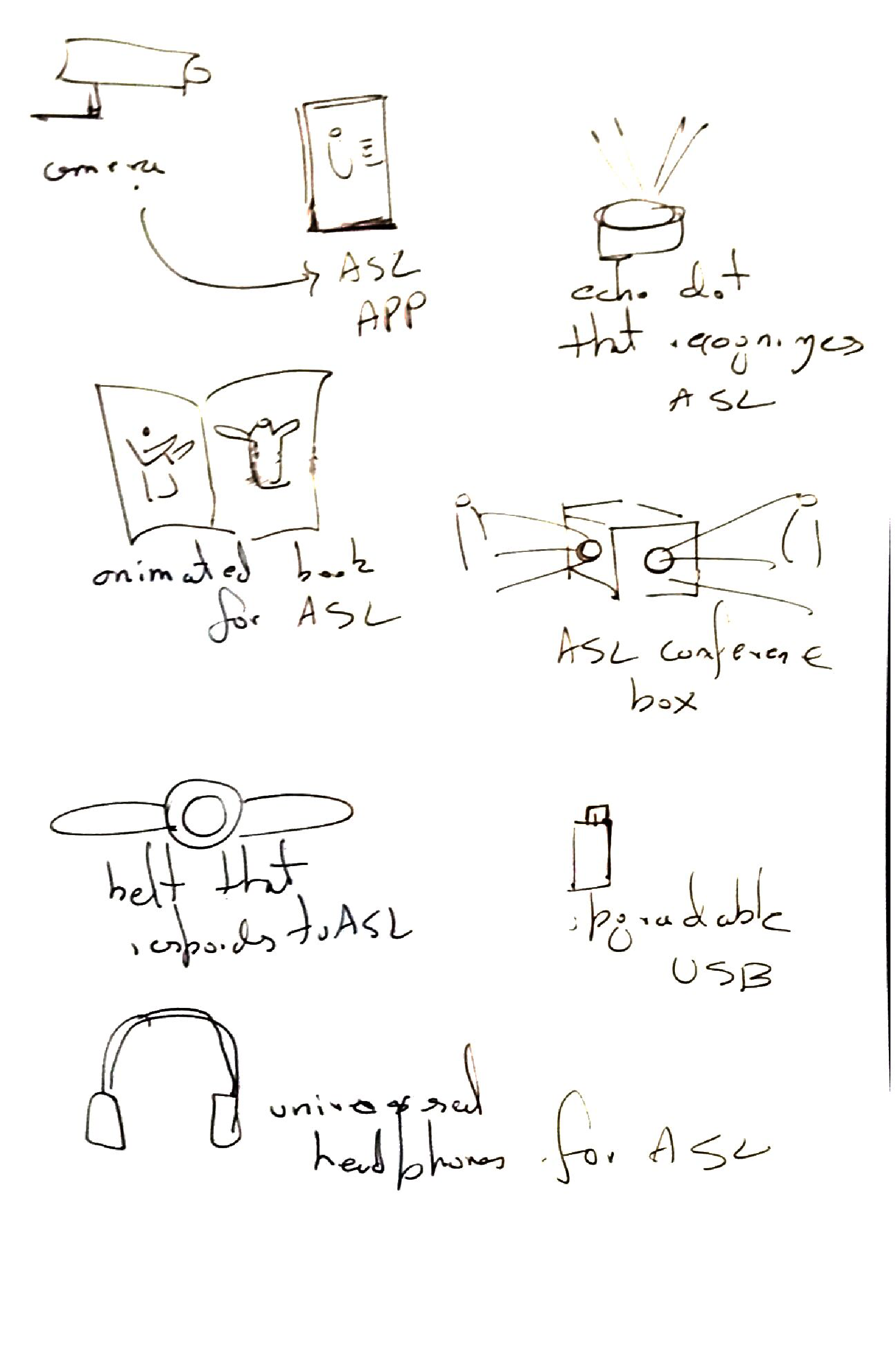
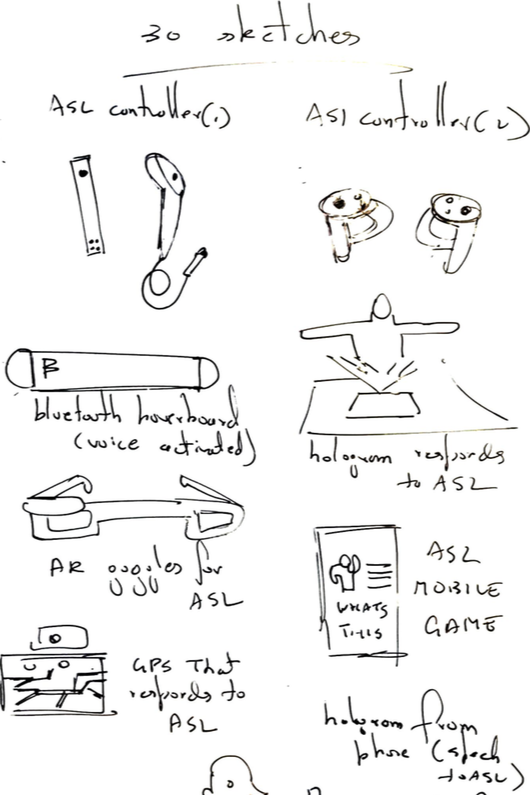
The Final Sketch
Each team member came up with their own sketches which were
then converged into one sketch based on the most effective solutions.
Our final sketch was a mobile and desktop application that allowed
users to request ASL interpreters at any time. This would be a videochat
application between for one-to-one or group communication with an
interpreter included in the chat who would sign for DHH users and
translate ASL to english for hearing users.


PERSONAS
Based on our proto personas and our design opportunities we created
three personas to represent our target users.

STORYBOARDS
We decided to base our story on a primary use case for each of our
primary personas.
This was done in order to create empathy for the
target users by visually highlighting the challenges they face when it
comes to communication during specific scenarios such as team
meetings.
SCENARIO 1
The software development team of 'TechDojo', a software startup in
Seattle that makes accounting software is communicating with their
CEO using 'BrickTalk' regarding an emergency situation with their
product.
SCENARIO 2
A PhD student is doing a study that involves a DHH user and hearing
user conversing with each other using a third-party app. She uses
'BrickTalk' for this study.
SCENARIO 3:
An accomplished entrepreneur and inventor who is also a DHH user is
using 'BrickTalk' to converse with a potential investor for his latest
startup.
Paper Prototype
We used A4 sheets and post-it notes for our paper prototype because
we wanted to simulate actual interaction with the interface. One of the
challenges we noticed with the paper prototype during our testing
sessions was that our key stakeholders were not able to distinguish
between interactive elements like buttons and static elements like text,
video and images because they were all on post-it notes.
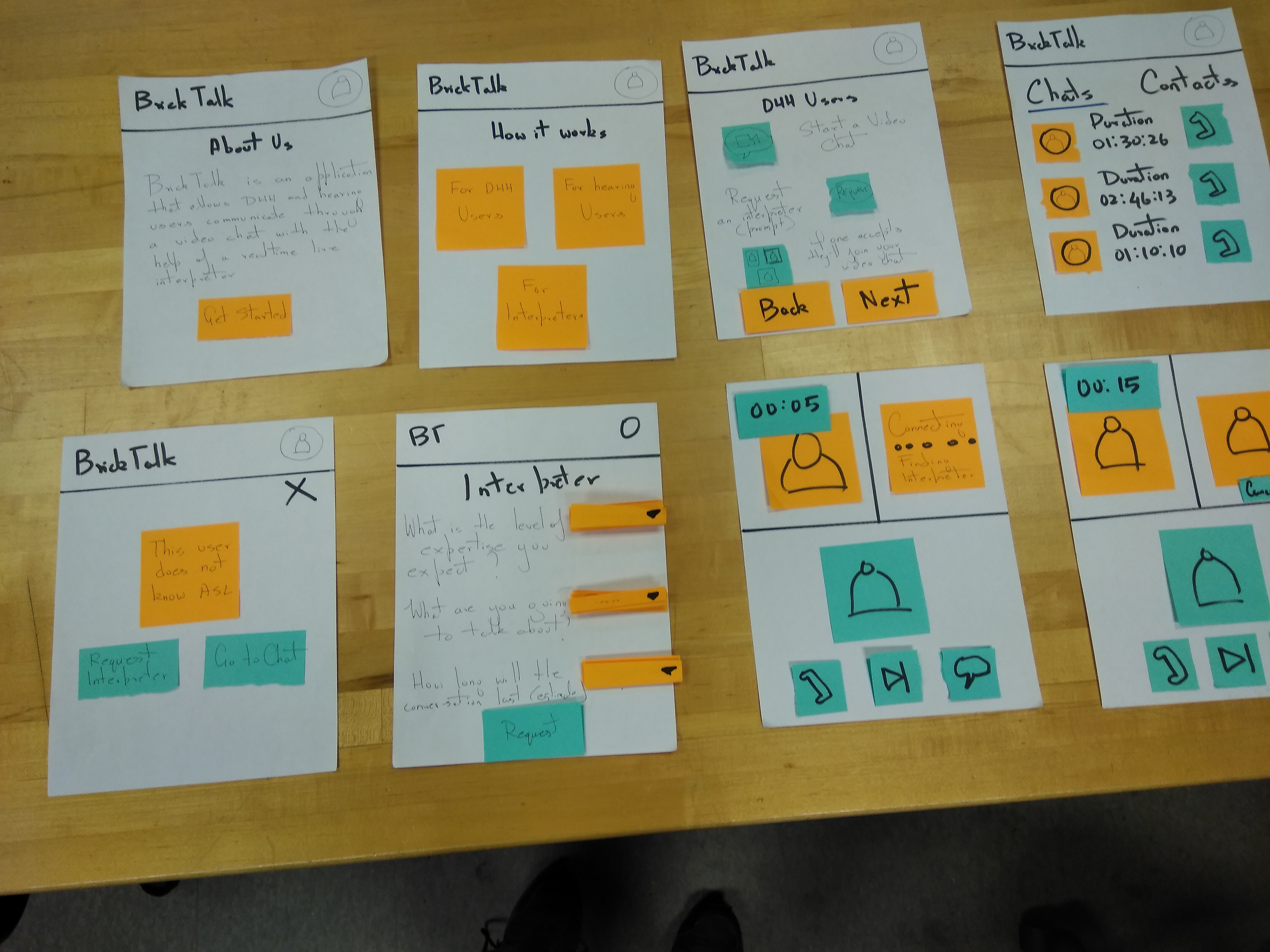
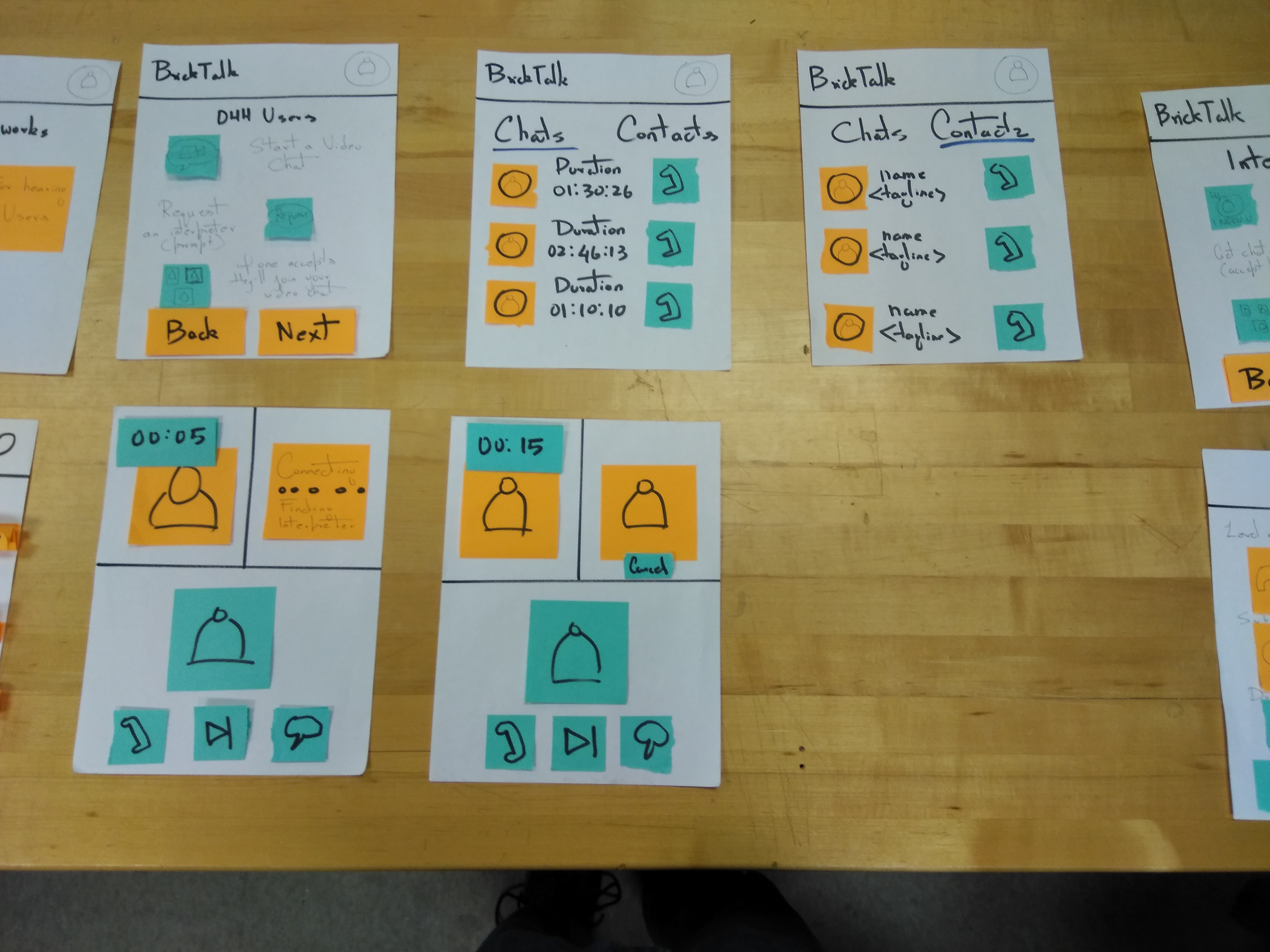

High-Fidelity Prototype
I decided to go with a minimal design for the high-fidelity prototype.
The user in this scenario is a hearing user and would like to converse
with a DHH user. The first screen shows the chat history as well as list
of contacts in alphabetical order.
Once a user decides to videocall a DHH user, a notification appears
which reminds the hearing user that an interpreter would be required
for this conversation.
The user can choose to continue with the call if they know ASL or
request an interpreter that will join them in the call.


The user would now need to select the level of expertise required.
There are instances when expert interpreters may not be available, so
the user would have to revert to an available interpreter. If the
conversation is brief and does not entail complex words, the user can
revert to a less experienced interpreter.
The user would then specify which topic the conversation is based on
and what the prescribed chat duration is.
Once the system finds an available interpreter who agrees to the
session, the user can see their individual ratings on several areas (as
rated by previous users), and choose to accept or decline the
interpreter's offer.
If they accept, they start the chat. Otherwise the user is reverted back
to the previous screen of inputing details.

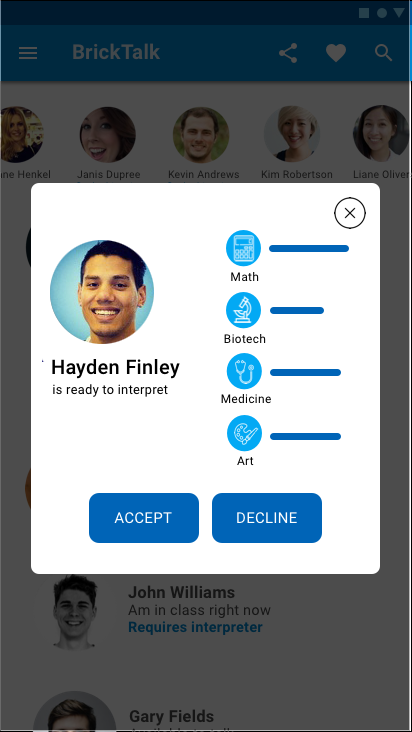
The user will be redirected to a chat window. The window at the top
left is the DHH user since the screen is from the perspective of the
hearing user (the windows will be reversed from the screen of the DHH
user).
The top right window is the interpreter who has joined the call and
signs for the DHH user and speaks for the hearing user.
The app is also applied to a group chat setting. We designed this app
to accommodate a maximum of 5 users (excluding the interpreter)
because it would be too challenging for the interpreter to sign for
multiple users especially if they speak out of turn too frequently (an
issue that we predict will turn up)
I also designed an in-built chat feature for the sole purpose of the DHH
or hearing users using it as a secondary means of communication if the
interpreter is not proficient and a new chat is started with a new
interpreter. The chat feature takes appears as a modal overlay so the
chats need to be very brief so as to not disrupt the regular videochat.


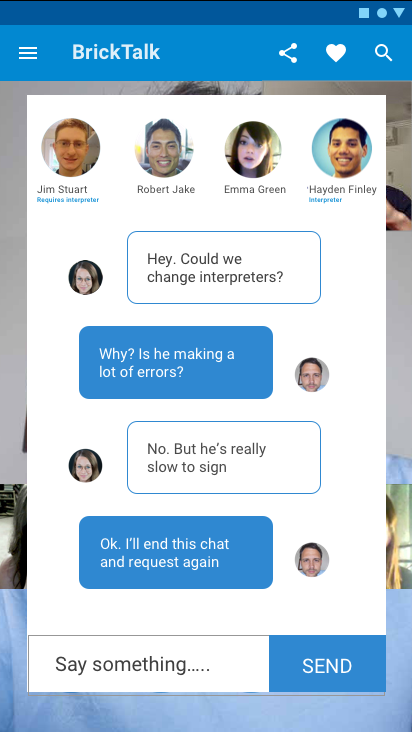
I finally designed a tablet and a desktop version of the app for
larger screens.
Usability Testing Feedback
We finally conducted a usability evaluation with our key stakeholder who interacted with our high-fidelity prototype. We set up two scenarios and assigned a set of tasks for each scenario.We were able to get the following feedback from the testing sessions.










